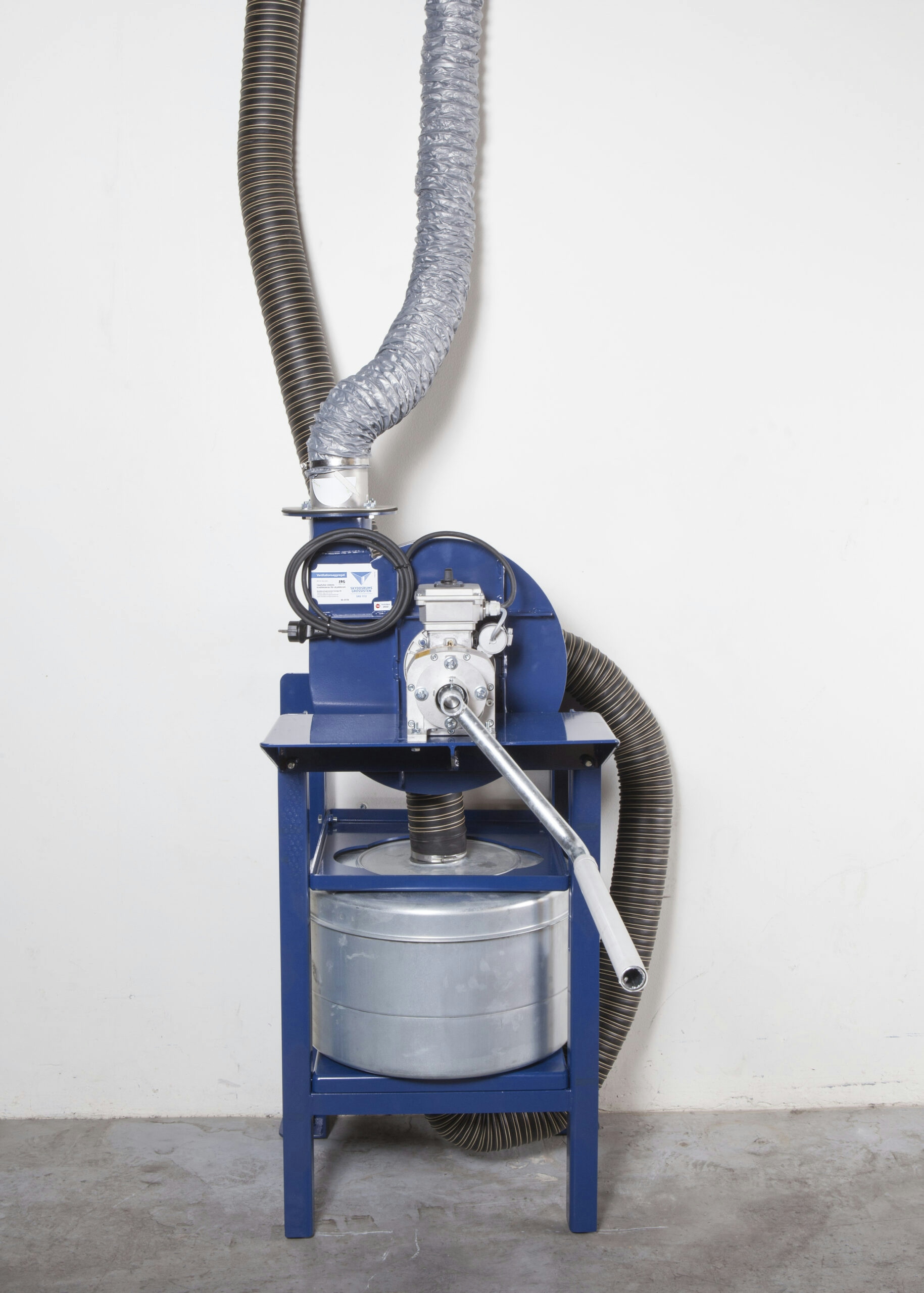Pressure relief valve
A pressure relief valve is used to protect against air shock waves through exhaust air ducts. It must open for the release of exhaust air when there is a certain excess pressure in the shelter in relation to the outside. If the overpressure disappears or the overpressure valve is affected by an air shock wave coming from outside, the valve must close. It must be able to be locked in the closed position from the inside of the shelter. In principle, the overpressure valve can be designed as a movable, balanced, and self-closing valve device that is mounted on the boundary wall of the shelter.
Gas-tight tubing
Tubing is used to conduct the air between the shock wave valve and the protective filter and between the protective filter and the fan. If the protective filter is not to be connected, the tubing must go directly from the shock wave valve to the fan. The tubing must be flexible and dimensioned for an air flow corresponding to the air demand of 60 people.
Mountable Airlock
The Mountable airlock is used to achieve a lock function to help maintain excess pressure in the shelter and to enable regulated single entry and exit from the shelter to the CR environment (outdoor air contaminated with chemical, biological, or radioactive warfare agents). Regulated single entries into shelters from CR environments must be possible after the required personal decontamination has been carried out in the airlock. In the case of general access to the shelter, the airlock must have an opening that at least corresponds to the opening width of the connecting door. After housing, the airlock must be closed again and only a smaller opening that allows single entry and exit must be used.
Wall sleeve for overpressure gauge
Wall sleeve for cable or pipe.
Wall sleeve for pressure relief valve
Wall sleeve for air intake or other peace installation.
Wall sleeve for air intake
Wall sleeve for air intake or other peace installation.
Air intake
Outdoor air duct for air intake to shelter.
Air flow meter
The airflow meter must be readable by the person pulling the ventilation unit and can be placed before or after this. Calibration of the meter must take place under the operating conditions that apply to the ventilation unit. The airflow meter must be calibrated for air flows of 150 and 300 m3/h. The accuracy of the meter must be within ±10%. The area for the airflow during filter ventilation must be marked in yellow and the area beyond this up to and including maximum ventilation without filter with white color.
Overpressure gauge
Overpressure gauges are used to measure the overpressure in the shelter during the operation of the ventilation unit. The overpressure must prevent the external wind pressure from adding CBR agents to the shelter through uncontrollable leaks in the gas boundary.
Ventilation tubing
Tubing is used to conduct the air between the ventilation unit and the supply air duct.
Filter
Protective filters are used in a shelter’s ventilation system to clean supply air contaminated by CBR agents. The air must be freed from coarser particles and coarse dust (pre-filter), aerosols (aerosol filter) as well as gases and vapors from chemical warfare agents and certain industrial chemicals (gas filter).
Crank to the ventilation unit
Crank for manual ventilation unit operation.
Ventilation unit frame
Frame for wall mounting. The frame rests against the floor but will only be attached to the wall. (Attachments in the floor rust.) The ventilation unit and filter must be mounted on the same frame.
Ventilation unit
Ventilation units are used for air supply in shelters and are designed for an air flow corresponding to the air demand of 60 people. Ventilation units are to be operated with electricity during normal operation but must be able to be operated manually in the event of an interruption in the electricity supply.
Shock wave valve
A shock wave valve is used in a shelter’s ventilation system as protection against incoming air shock waves. It must be designed as a quick-closing device for installation in the supply air duct. The valve must be open during ventilation and must close the supply airflow within a few milliseconds when subjected to an air shock wave. Leaking pulse when closing the valve must not damage the ventilation system or people in the shelter.
